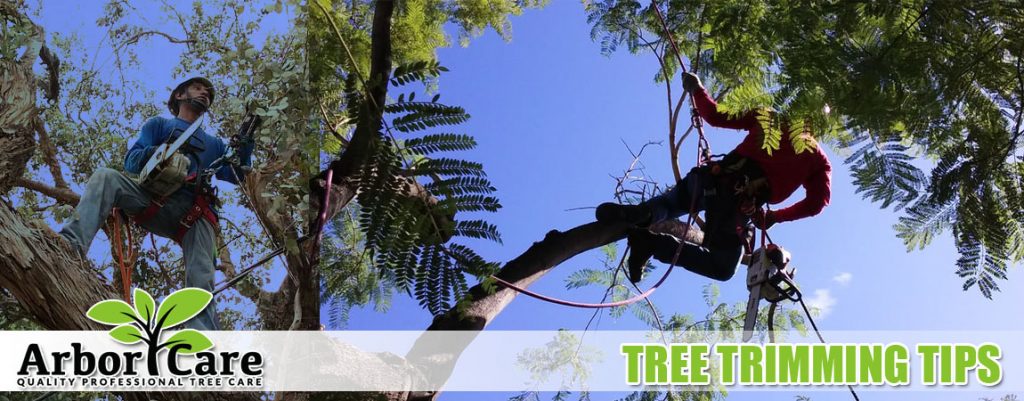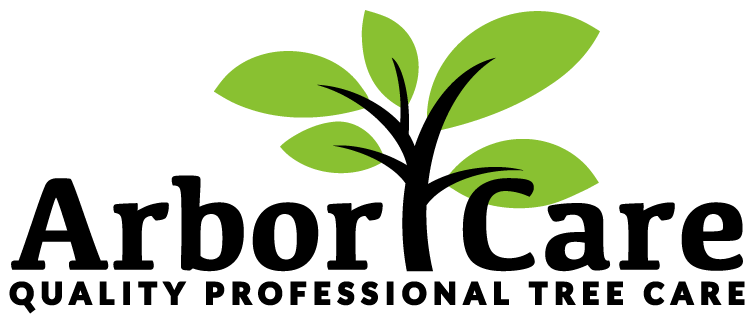How To Trim A Tree – Large or Small

If you’re Googling “How To Trim A Large Tree“, “How To Trim A Small Tree” or “Tree Trimming Tips“, this article should help!
When you know the basics of tree pruning and trimming, then you can handle most of the work yourself. There is a variety of tips for pruning and trimming techniques that can help to keep your tree looking great. The right type of knowledge and equipment will allow you to prune your tree when needed to maintain the appearance and health as well as to remove dead branches and common issues that could be dangerous.
There are a lot of tree trimming techniques, but if you are wanting to do this on your own, then you need to learn the basics to keep things in order. You could also hire a professional and not think about it. Keep reading our guide below for more information.
Reasons to prune or trim your tree
Trees will normally get trimmed for one of 3 reasons: health, safety, or aesthetics. For instance:
- Health – It can sometimes be possible to save infected trees by pruning the affected limbs and branches. Thinning the tree’s crown improves airflow, which is beneficial. If the branches are rubbing together or crossing, then need to be trimmed so that they don’t fall unexpectedly.
- Safety – Broken or dead limbs and branches can fall at any time, which is a big safety issue. If the branches of a tree obstruct your vision when you are driving, they need to be trimmed. If the branches and limbs grow to close to utility lines, contact your utility company to take care of it.
- Aesthetics – Pruning your tree helps to maintain the appearance and shape. You should never impose an unnatural shape or size on a tree. The amount of pruning and trimming that is needed could damage it.
General Tree Trimming Tips For Large & Small Trees
- Only trim branches that have narrow, weak, V-shaped angles. Keep the branches that have strong U-shaped angles.
- It is best to prune or trim a tree during the dormant season. Although, you can prune at anytime, it is better when it is dormant. The only exception is when there is a hazard
- Be conscientious about the branch size that you are removing. If it is less than 5 cm in diameter, then it is okay to remove. If it is between 5 to 10 cm, you may not want to remove it. If it is more than 10 cm in diameter, you should only remove it if you have a really good reason.
Lateral branches need to be between three-quarters and one-half the diameter of the stem at the attachment point. Otherwise, they should be removed.
- Do not trim branches that are too long or too close. You should not remove the branch collar or leave a large stub.
- When you are finished pruning, the ration for the crown to tree height needs to be two-thirds.
- Try to prune young branches. They are easier to manage and there is a lower chance of leaving nasty scars.
Pruning Tips for Trees
The tips below will help to guide you if you have been planning on pruning your trees or if you want to learn more about the care and maintenance techniques for tree trimming.
Crown Thinning
If you are needing to trim the crown of your tree, keep the following techniques and tips in mind:
- Prune branches that are crossing or rubbing each other.
- Keep lateral branches evenly spaced as much as possible, especially on a young tree.
- Do not remove more than a fourth of the crown at once. If you have to remove more than that, spread it over years.
Crown raising
- In order to make clearance for pedestrians or other reasons, you can raise the crown by pruning your tree carefully. Maintaining the live branches on most of the tree’s height. If you remove too many branches toward the bottom, then your tree may not develop a strong stem.
Crown Reduction
Only reduce the crown if it is needed. Prune the lateral branches that are a third in diameter of the stem that will need to be removed.
- If you have to remove more than half of the foliage from the branches, just remove the whole branch.
Techniques for Tree Trimming
Below are some techniques for trimming to keep in mind:
- Before you make a cut, look for the collar of the branch, which grows from stem tissue at the base of the branch. Look for the ridge, which is on the upper surface and runs parallel to the angle at the stem of the branch.
- Use the same techniques to prune living and dead branches.
- Always cut the outside of the bark ridge and angle the cut down and away from the stem. Be sure that you don’t damage the collar of the branch.
- If the stem is too long, then use a three cut technique. Create a notch on the side of the stem that faces away from the branch being kept. Make a second cut inside of the branch and above the ridge. Make a third cut which will remove the stub by cutting through the stem which is parallel to the bark ridge.
Keeping these techniques and tips from this guide before you take on trimming and pruning your trees.
How much does trimming a tree cost?
If you are wanting to keep your landscape looking great, then you need to consider having your trees pruned and trimmed. Pruning and trimming helps to remove broken or dead limbs as well as helps to keep your tree healthy. The cost of trimming your tree will depend on various factors, but it really depends on whether you can do it yourself or if you need to hire a professional. Learn more about palm tree trimming costs here.
Tree Trimming Services In Tempe, Arizona
If you would rather have an expert trim your trees and live or do business in the Tempe, Arizona area, Arbor Care can help! For professional tree trimming in Tempe, give Arbor Care a call today at 480-797-5566.

